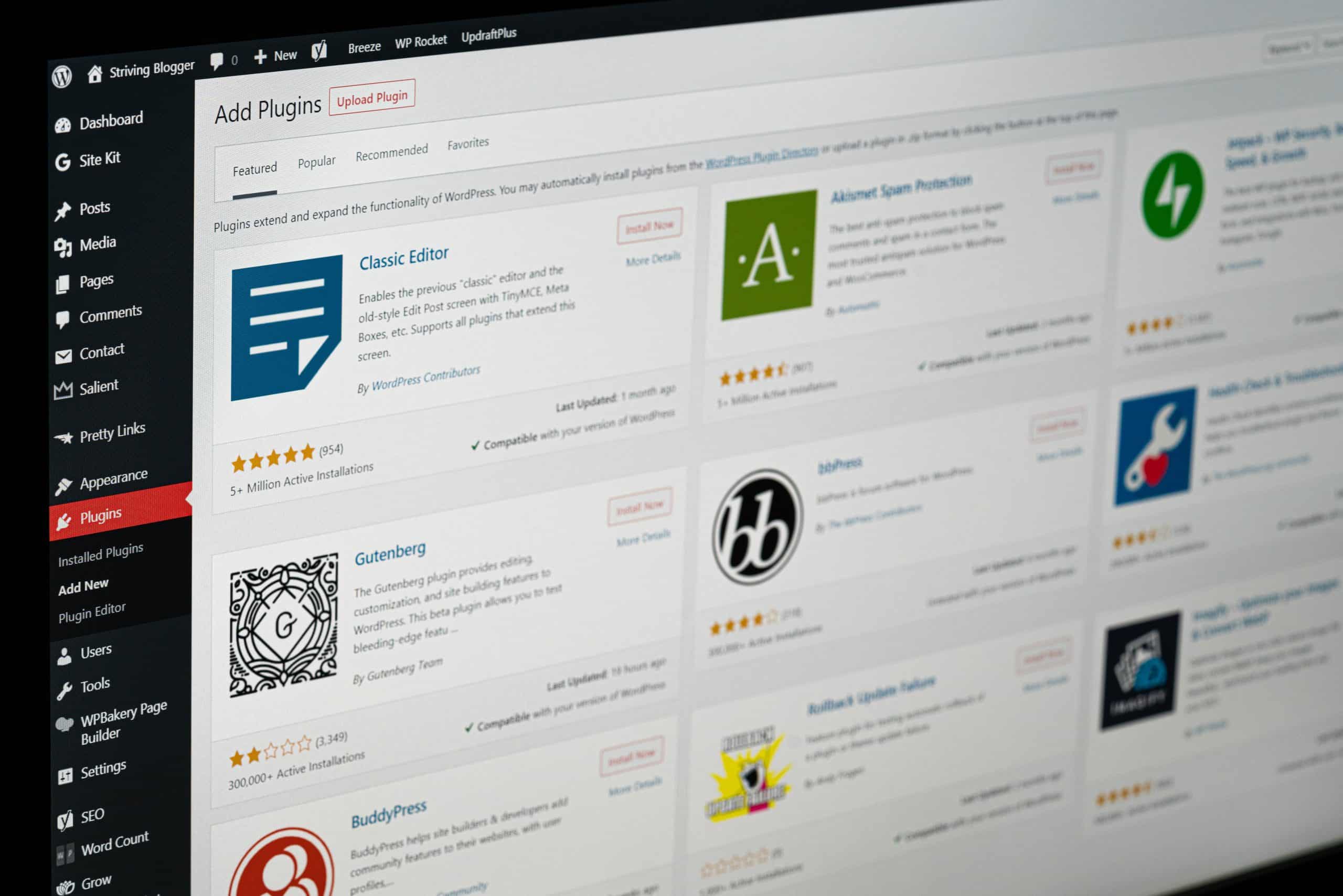Securing your WordPress site with SSL (Secure Sockets Layer) has become an essential step in today’s online landscape. With cyber threats and privacy concerns on the rise, it’s crucial to ensure that data exchanged between your site and its visitors remains encrypted and protected. However, managing SSL on a WordPress site can often feel like navigating through a complex maze of technical jargon and settings. Fear not! In this article, we will delve into the nitty-gritty of SSL management for WordPress, demystify the process, and equip you with the knowledge to confidently secure your website.
What is SSL and why is it important?
SSL, or Secure Socket Layer, is a crucial technology for ensuring the security of data transmitted between a website and its visitors. It encrypts the information exchanged, making it difficult for hackers to intercept and decipher. This encryption protects sensitive data such as login credentials, personal information, and credit card details. With cyber threats on the rise, having an SSL certificate has become imperative for all websites, not just e-commerce platforms. In fact, search engines like Google prioritize websites with SSL certificates in their search results as a way to encourage safer internet browsing.
Moreover, implementing SSL can also improve your website’s credibility and trustworthiness among visitors. When users see the padlock icon and https:// in the address bar instead of http://, they are more likely to trust that their data is safe with your site. This can lead to higher conversion rates and better user experiences.
Additionally, SSL is becoming mandatory for compliance with regulations such as GDPR and PCI DSS, further underlining its importance for website owners looking to avoid legal penalties and maintain customer trust, especially when handling Data Subject Access Requests or DSAR solutions.

Choosing the right SSL certificate for WordPress
When it comes to choosing the right SSL certificate for your WordPress site, there are a few key factors to consider. First, you’ll need to determine the level of security you require. For most WordPress sites, a standard domain validation (DV) certificate will suffice, providing encryption and basic authentication. However, if you handle sensitive customer information or run an e-commerce site, it’s worth investing in an extended validation (EV) certificate for enhanced trust and credibility.
Another crucial consideration is compatibility with WordPress plugins and services. Before purchasing an SSL certificate, ensure that it’s supported by your hosting provider and integrates seamlessly with popular WordPress security plugins like Wordfence or Sucuri. Additionally, look for certificates that offer automated renewal processes to simplify ongoing maintenance and avoid potential lapses in security due to expired certificates.
Ultimately, the right SSL certificate for your WordPress site depends on your specific needs and budget constraints. By carefully evaluating security requirements, compatibility with WordPress tools, and long-term management considerations, you can make an informed decision that enhances both the protection and performance of your website.
Installing SSL on your WordPress site
Installing SSL on your WordPress site using the WP Force SSL plugin is a straightforward process that significantly enhances your website’s security. This powerful plugin seamlessly redirects all your HTTP traffic to HTTPS, ensuring that data transmitted between the server and users is encrypted and secure. By activating this plugin, you can strengthen your site’s trustworthiness and protect sensitive information such as login credentials and personal details.
WP Force SSL simplifies the entire SSL installation process by automating the necessary changes within your WordPress site. With just a few clicks, you can enable SSL sitewide without manually adjusting links or rewriting code. The convenience of this approach not only saves time but also eliminates the potential for human error when configuring SSL settings. Additionally, utilizing this plugin helps to reinforce your SEO efforts, as search engines favor HTTPS-secured websites, ultimately improving your site’s ranking and visibility. With these benefits in mind, integrating SSL via the WP Force SSL plugin emerges as an essential strategy for creating a safe and reputable online presence.

Configuring SSL settings for better security
Configuring SSL settings is a crucial aspect of ensuring better security for your WordPress site. By enabling SSL, you can encrypt the data exchanged between your site and its visitors, safeguarding sensitive information such as login credentials and payment details. One effective strategy for enhancing SSL security is to disable outdated protocols like SSL 2.0 and 3.0 and enable TLS (Transport Layer Security) versions 1.2 or above instead. This ensures that your site is not vulnerable to known exploits and provides a more secure communication channel.
Furthermore, adjusting ciphers and protocols can also contribute to better security. Disabling weak ciphers and using strong, up-to-date ones helps fortify the encryption process, making it more difficult for malicious actors to intercept or decipher transmitted data. Additionally, implementing HTTP Strict Transport Security (HSTS) headers instructs web browsers to only access the site over HTTPS, reducing the risk of man-in-the-middle attacks or protocol downgrade threats.
In conclusion, configuring SSL settings goes beyond just enabling HTTPS on your WordPress site; it involves fine-tuning various parameters to enhance overall security. By staying informed about cybersecurity best practices and continuously updating SSL configurations in line with current standards, website owners can effectively mitigate potential vulnerabilities and provide a safer browsing experience for their users.
Testing and troubleshooting SSL issues
SSL issues can be a source of frustration for website owners, often leading to security vulnerabilities and a poor user experience. When it comes to testing and troubleshooting SSL issues on your WordPress site, it’s important to approach the process systematically. Start by checking the SSL certificate validity and ensuring that it is installed correctly on your server. Utilize online SSL checkers or browser tools to identify potential problems with your SSL configuration, such as insecure content or mixed content warnings.
In addition to technical tools, don’t underestimate the power of clear communication with your hosting provider or SSL certificate issuer. They can provide valuable insights into common SSL issues and offer specific solutions tailored to your setup. Furthermore, keeping an eye on industry updates and best practices for SSL management will help you stay ahead of potential issues before they impact your site’s performance and security.

Renewing and maintaining your SSL certificate
Renewing and maintaining your SSL certificate is essential for keeping your WordPress site secure and trustworthy. As cyber threats continue to evolve, regular renewal of your SSL certificate helps ensure that sensitive information transmitted through your site remains encrypted and protected from potential attackers. By staying on top of this process, you not only safeguard your visitors’ data but also maintain credibility with search engines, which factor SSL certification into their ranking algorithms.
To streamline the management of SSL on your WordPress site, consider setting up automatic renewal for your SSL certificates. Services like Let’s Encrypt offer convenient automation tools that can handle the renewal process without manual intervention. Additionally, staying informed about industry best practices and staying up-to-date with recent developments in TLS encryption can help you make informed decisions about maintaining a secure online environment for your users.
Conclusion: Ensuring a secure and trustworthy WordPress site
In conclusion, ensuring a secure and trustworthy WordPress site goes beyond just implementing an SSL certificate. While SSL is a critical component in encrypting data transfers, other measures such as regular security scans, malware detection, and strong password policies are equally important. It’s vital to stay updated with the latest security patches and ensure that all plugins and themes are from reputable sources with regular updates.
Furthermore, regularly backing up your site and monitoring for any unusual activity can help prevent potential security breaches. Implementing two-factor authentication can also add an extra layer of security for user logins. By taking a proactive approach to security and continuously staying informed on best practices, WordPress site owners can create a reliable and safe online presence for themselves and their visitors.